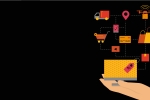Our tax experts assist and advice you on tax and duties
Our experts have special knowledge in handling complex questions regarding tax and duties in the Norwegian and international market. Through our network in 158 countries we can offer comprehensive assistance no matter where in the world the business is run.
Tax is technically complicated and requires thorough knowledge in frequently changing regulations. The right use and understanding of the regulations require experience and cutting-edge expertise. We give advice on optimal financing solutions, risk management and internal control in the tax area. We offer tailor-made teams, strategies and solutions that meet your needs.
How can we help?
Contact us

Norway's Tax blog
Norway's Tax Blog is about more than taxes. Find our perspectives on legal issues, corporate law, employment law, VAT, personal- and payroll tax and corporate tax.



